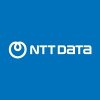Filter interviews by
Capgemini Engineering Professional 1 Interview Questions and Answers
Capgemini Engineering Professional 1 Interview Experiences
3 interviews found
I appeared for an interview in Mar 2025, where I was asked the following questions.
- Q1. SQL Budget Forecast
- Q2. Excel Macro VBA
I appeared for an interview in Feb 2025, where I was asked the following questions.
- Q1. What is manual testing and their types
- Ans.
Manual testing is the process of manually checking software for defects without automation tools.
Exploratory Testing: Testers explore the application without predefined test cases, e.g., testing a new feature by navigating through it.
Functional Testing: Verifying that the software functions as intended, e.g., checking if a login feature works correctly.
Usability Testing: Assessing the user-friendliness of the applicati...
- Q2. What is sql and many queries
- Ans.
SQL (Structured Query Language) is a standard language for managing and manipulating relational databases.
SQL is used to perform tasks such as querying data, updating records, and managing database structures.
Common SQL commands include SELECT (to retrieve data), INSERT (to add data), UPDATE (to modify data), and DELETE (to remove data).
Example of a SELECT query: SELECT * FROM employees WHERE department = 'Sales';
SQL s...
- Q1. Self introduction
- Q2. About project detailes
Top trending discussions




Interview questions from similar companies

I applied via Campus Placement and was interviewed before Jan 2021. There was 1 interview round.
(1 Question)
- Q1. Regulatory basics, ICH guidelines
Interview Preparation Tips

I applied via Company Website and was interviewed before Jun 2020. There were 3 interview rounds.
Interview Questionnaire
2 Questions
- Q1. GL related questions
- Q2. Comfortable for night shifts
- Ans.
Yes, I am comfortable with night shifts and have experience working during those hours.
I have worked night shifts in my previous job and have adapted to the schedule
I am a night owl and prefer working during those hours
I understand the importance of being alert and focused during night shifts
I am willing to adjust my sleep schedule to accommodate night shifts
Interview Preparation Tips

I appeared for an interview before Dec 2015.
Interview Questionnaire
2 Questions
- Q1. Basic questions on Java and data structures with few analytics questions
- Q2. Basic questions
Interview Preparation Tips
Experience: 1 minute for each question. Completely technical round with questions on Java, algorithm and data structures
Duration: 1 hour 30 minutes
Total Questions: 90
Round: HR Interview
Experience: They ask about your interest, your hobbies and once you are done with this they will ask you questions on the hobbies you previously claimed you like.
Skills: Java Programming
College Name: Thapar University, Patiala

Interview Questionnaire
20 Questions
- Q1. What is Difference between C,C++?
- Ans.
C is a procedural programming language, while C++ is an object-oriented language that extends C with classes and objects.
C is a procedural language; C++ supports both procedural and object-oriented programming.
C uses functions as the primary building blocks; C++ uses classes and objects.
C does not support function overloading; C++ allows function overloading.
C has no built-in support for encapsulation; C++ provides enc...
- Q2. What is a class?
- Ans.
A class is a blueprint for creating objects in programming, encapsulating data and behavior.
Defines properties (attributes) and methods (functions) for objects.
Example: A 'Car' class may have attributes like 'color' and 'model', and methods like 'drive()' and 'stop()'.
Supports inheritance, allowing new classes to derive from existing ones.
Example: A 'ElectricCar' class can inherit from 'Car' and add features like 'char...
- Q3. What is an object?
- Ans.
An object is a distinct entity that encapsulates data and behavior in programming, representing real-world or abstract concepts.
Objects are instances of classes in object-oriented programming.
They can contain attributes (data) and methods (functions).
Example: A 'Car' object may have attributes like 'color' and 'model', and methods like 'drive()' and 'stop()'.
Objects promote code reusability and modularity.
- Q4. What is static variable?
- Ans.
A static variable retains its value between function calls and is shared across all instances of a class in programming.
Static variables are initialized only once and exist for the lifetime of the program.
In C/C++, a static variable inside a function retains its value between calls.
In Java, static variables belong to the class rather than any instance.
Example in C: static int count = 0; - count retains its value across...
- Q5. What is difference between Static and Global Vaiable?
- Ans.
Static variables are limited to their function scope, while global variables are accessible throughout the entire program.
Static variables retain their value between function calls, e.g., 'static int count = 0;' in a function.
Global variables are declared outside any function and can be accessed from any function, e.g., 'int globalCount = 0;'
Static variables are not visible outside their defining function, while global...
- Q6. What are pointers?
- Ans.
Pointers are variables that store memory addresses of other variables, enabling efficient data manipulation in programming.
Pointers allow direct memory access, which can enhance performance in applications.
Example: In C, 'int *ptr;' declares a pointer to an integer.
Pointers can be used to dynamically allocate memory using functions like 'malloc()' in C.
They enable the creation of complex data structures like linked lis...
- Q7. What are structures?
- Ans.
Structures are organized systems or frameworks that define the arrangement and relationships of components within a system.
Structures can be physical, like buildings or bridges.
In programming, structures refer to data types that group related variables.
In biology, structures include the arrangement of cells in tissues.
In organizations, structures define roles, responsibilities, and hierarchies.
- Q8. What is a stack and various operations on it?
- Ans.
A stack is a linear data structure that follows the Last In First Out (LIFO) principle for managing data.
1. Definition: A stack is a collection of elements with two main operations: push (add) and pop (remove).
2. LIFO Principle: The last element added to the stack is the first one to be removed.
3. Operations: Common operations include push, pop, peek (view top element), and isEmpty (check if stack is empty).
4. Example:...
- Q9. What are 3 steps for using function in c?
- Ans.
Three steps for using functions in C.
Declare the function with its return type, name, and parameters.
Define the function by writing the code for it.
Call the function by using its name and passing arguments if necessary.
- Q10. What is limit for no of arguments passed to functions? if limit is 10 den how to pass more parameters? Ans:- either Array or Structure
- Ans.
The limit for the number of arguments passed to functions is not fixed. Arrays or structures can be used to pass more parameters.
The limit for the number of arguments passed to functions is not fixed and depends on the programming language and system architecture.
In C programming language, there is no limit on the number of arguments that can be passed to a function.
In Java, the maximum number of arguments that can be ...
- Q11. What is union?
- Ans.
A union is an organized group of workers that collectively bargain for better wages, benefits, and working conditions.
Unions advocate for workers' rights and negotiate labor contracts.
Examples include the United Auto Workers (UAW) and the American Federation of Teachers (AFT).
Unions can provide legal representation and support during disputes with employers.
They often engage in political lobbying to influence labor law...
- Q12. What is difference between if else and switch case statements?
- Ans.
if else is used for simple conditions while switch case is used for multiple conditions.
if else is a sequential decision-making statement while switch case is a multi-branch decision-making statement
if else is used when there are only a few conditions to be checked while switch case is used when there are multiple conditions to be checked
if else can have multiple conditions in a single statement while switch case can o...
- Q13. What are member functions?
- Ans.
Member functions are functions that are defined inside a class and can access the class's private and protected members.
Member functions are also known as methods.
They can be used to manipulate the data members of an object.
They can be overloaded, meaning multiple functions with the same name but different parameters can exist within a class.
They can be declared as const, meaning they do not modify the object's state.
E...
- Q14. Find the output:- a=5;b=4;c=++a+b--; find c?
- Ans.
Find the output of c=++a+b-- where a=5 and b=4.
The value of a is incremented by 1 before the addition operation
The value of b is decremented by 1 after the addition operation
The final value of c is 10
The value of a becomes 6 and the value of b becomes 3
- Q15. Plant 10 plants in 5 rows such that each row has 4 plants
- Ans.
10 plants can be planted in 5 rows with 4 plants in each row.
Divide the plants into groups of 4.
Arrange the groups in 5 rows.
Each row will have 4 plants.
- Q16. There is 2 pot one red and one blue. one pot contains tressure. Two statement are given 1. only one of the statement is correct. 2. Blue pot has the tressure. Find the tressure?
- Q17. Exceptions handling in java?
- Ans.
In Java, exceptions are handled using try-catch blocks, allowing for graceful error management and program stability.
Use try-catch blocks to catch exceptions: try { // code that may throw an exception } catch (ExceptionType e) { // handle exception }
Finally block can be used for cleanup: try { // code } catch (Exception e) { // handle exception } finally { // cleanup code }
Throwing exceptions: Use...
- Q18. Run me through your resume
- Q19. Mostly my nterview was project based. He asked me to explain me my project. My contribution in it
- Q20. What are your 5 year plans
- Ans.
In five years, I aim to advance my consulting skills, lead impactful projects, and contribute to strategic decision-making.
Develop expertise in a specific industry, such as healthcare or technology, to provide tailored solutions.
Lead a team of consultants on major projects, enhancing my leadership and project management skills.
Build a strong professional network by attending industry conferences and engaging with thoug...
Interview Preparation Tips
Experience: Written Test consists of following sections:
Technical sections had questions from almost all the sections(C, C++, DBMS, DS, OS)
Quantitative aptitude’s questions were good.. All were almost of R. S. Aggarwal’s level.
Logical reasoning and verbal ability was good.. Some questions were little tough.
Tips: Try to be fast n practice Quantitative aptitude to increase speed..
Round: Technical Interview
Experience: Technical Interview was conducted on skype. I was able to answer most of the questions. And if i could not answer i tried to explain my approach using examples...It lasted for 50 mins..
Tips: Brush up basics knowledge of C,C++ and be confident of what you know. And try to explain your approach if you couldn't tell answer.
Round: HR Interview
Experience: This interview was also through skype. You can drive this Interview towards the direction you want... This interview also lasted for 50 mins... I explained him my project.
Tips: Just be cool.. He was just checking your confidence n spirit to complete the task given to you..
All the best!!!!
General Tips: Practice Quant regularly from Rs.Agrawal, solve questions on DBMS and C,C++ from India Bix.. Test was conducted by AMCAT so try to find if its questions are available on internet.
Skills: C,C++
College Name: NIT Raipur
Motivation: Its clients which are AUDI, Ferrari, Coca-cola,Unilever.
Funny Moments: To try to make me comfortable he asked me weather i like coke or pepsi. He asked why? i said bcoz i feel coke has little less soda content in it.:P Next when i told him my hobbies are watching sitcoms he asked which sitcoms have u watched. I started naming sitcoms he had to intreuppt me.. den asked which one u liked best n y i was telling him the reason then in between he asked me about my project n i thought it was about sitcom so i was answering him about sitcom rather than my project then after a big confusion i co
Skills evaluated in this interview

Interview Questionnaire
2 Questions
- Q1. What's a Single Ops tool?
- Q2. Tell me about yourself
Interview Preparation Tips
Experience: We had screening test in which 15 out of 40 were shortlisted
Tips: Be quick , skip the difficult ones
Duration: 20 minutes
Total Questions: 60
Round: Group Discussion
Experience: Had a brief discussion on the topic.Started the conversation and did positive contribution.
Tips: Speak with confidence , maintain eye contact with everyone .
Duration: 15 minutes
Round: Technical Interview
Experience: Have been asked around 10-15 questions , difficulty is moderate
Round: HR Interview
Experience: Open loop questions
Tips: Be realistic and keep it short
College Name: Malla Reddy Institute Of Engineering & Technology ( MRIET )
Skills evaluated in this interview

I applied via Referral and was interviewed before Apr 2020. There were 3 interview rounds.
Interview Questionnaire
1 Question
- Q1. Technical questions on eloqua, email marketing
Interview Preparation Tips

I applied via Approached by Company and was interviewed before Aug 2021. There was 1 interview round.
(1 Question)
- Q1. C programming questions
Interview Preparation Tips
Capgemini Engineering Interview FAQs
Tell us how to improve this page.
Capgemini Engineering Interviews By Designations
- Capgemini Engineering Software Engineer Interview Questions
- Capgemini Engineering Analyst Interview Questions
- Capgemini Engineering Software Developer Interview Questions
- Capgemini Engineering Senior Software Engineer Interview Questions
- Capgemini Engineering Consultant Interview Questions
- Capgemini Engineering Senior Consultant Interview Questions
- Capgemini Engineering Associate Engineer Interview Questions
- Capgemini Engineering Associate Consultant Interview Questions
- Show more
Interview Questions for Popular Designations
Overall Interview Experience Rating
based on 4 interview experiences
Difficulty level
Duration
Interview Questions from Similar Companies
Capgemini Engineering Professional 1 Reviews and Ratings
based on 20 reviews
Rating in categories
|
Senior Software Engineer
1.8k
salaries
| ₹4.8 L/yr - ₹21.7 L/yr |
|
Technical Lead
1.3k
salaries
| ₹14.4 L/yr - ₹24 L/yr |
|
Software Engineer
1.1k
salaries
| ₹4.8 L/yr - ₹11 L/yr |
|
Senior Consultant
455
salaries
| ₹14 L/yr - ₹24 L/yr |
|
Consultant
402
salaries
| ₹9.3 L/yr - ₹16.6 L/yr |

Genpact

DXC Technology

Virtusa Consulting Services

CGI Group
- Home >
- Interviews >
- Capgemini Engineering Interview Questions

















